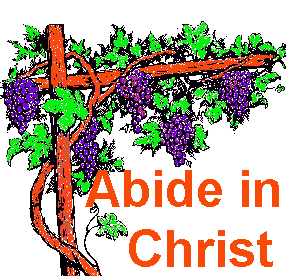Colosse was about one
hundred miles from Ephesus. It was probably in the
missionary expansion of the Ephesian Church that the
Colossian Church was founded. We do not know who its
founder was; but it may well have been Epaphras who
is connected with the Churches at Colosse,
Hierapolis and Laodicea (1:7; 4:12, 13). Paul did
not found the church at Colosse. In fact, he had
never visited there (2:1). It is a good speculation
that the church was started during his three year
stay in Ephesus (Acts 19:10) by Epaphras.
The church at Colossae
was mainly a Gentile church (1:21). The sins
described are mostly Gentile in character.
AUTHOR:
The author claims to be Paul the apostle (1:1).
There is no real doubt to this conclusion. It has
every mark of Paul’s style and "there is no evidence
that anyone else took Paul’s name to palm off this
striking and vigorous polemic."
DATE:
This letter was sent at the same time with the
Epistle to Philemon and the one to the Ephesians
since Tychicus the bearer of the letter to Ephesus
(Eph. 6:21f), and the one to Colossae (Col. 4:7f)
was a companion of Onesimus (Col. 4:9) the bearer of
that to Philemon (10-12). If Paul is a prisoner
(Col. 4:3; Eph. 6:20; Philemon 9) in Rome, as most
scholars hold, and not in Ephesus, the probable date
would be A. D. 63. I believe that Paul is in prison
in Rome when he sends out these epistles. If so, the
time would be after the arrival in Rome from
Jerusalem as told in Acts 28 and before the burning
of Rome by Nero in A. D. 64. If Philippians was
already sent, A. D. 63 marks the last probable year
for the writing of this group of letters.
OCCASION:
The letter was written upon the arrival of Epaphras
in Rome from Colossae with news of the state of the
church there (1:7-9; 4:12f). One very disquieting
feature of the new teaching there "was a strong
inclination on the part of the Christians to accept
an attractive line of teaching which (although they
did not suspect it) was calculated to subvert the
pure gospel which they had believed and bring them
into spiritual bondage."
"Grievous wolves" have
descended upon the churches in the Lycus Valley
(Colossae, Hierapolis, Laodicea) and are leading
many of the believers astray. These false teachers
and deceivers were later called Gnostics. The
culture of Paul’s day was full of the teachings of
the mystery cults which professed new thought with a
world view that "sought to explain everything on the
assumption that matter was essentially evil and that
the good God could only touch evil matter by means
of a series of aeons or emanations so far removed
from him as to prevent contamination by God and yet
with enough power to create evil matter." These
Gnostics (hoi gnostikoi, the knowing ones)
with their philosophic speculations applied their
theory of the universe to the Person of Christ. Many
today are content to deny sin, disease, death and
evil in spite of the evidence to the contrary. The
issue was so grave that Epaphras journeyed all the
way to Rome to seek Paul’s wisdom and help.
PURPOSE OF WRITING:
Paul wrote to counter the Gnostic attack on the
Person of Christ. The Docetic (dokeo, to
seem) held that Jesus did not have a real human
body, but only a phantom body. He was an aeon and
had no real humanity. The Cerinthian Gnostics
(followers of Cerinthus) "admitted the humanity of
the man Jesus, but claimed that the Christ was an
aeon that came on Jesus at his baptism in the form
of a dove and left him on the Cross so that only the
man Jesus died."
Paul confronted both
false teachings with "his full-length portrait of
Jesus Christ as the Son of God and the Son of Man
(both deity and humanity) in opposition to both
types of Gnostics." Cf. Phil. 2:5-11.
Colossians is just as
relevant today when men try to rob Jesus Christ of
his death as when Paul wrote it. It speaks to the
New Age Movements, the legalists, as well as the
"licentious element that let down all the bars for
the flesh while the spirit communed with God."
THE LYCUS VALLEY:
Three important cities in the Lycus Valley,
Laodicea, Hierapolis and Colosse, were located about
100 miles from Ephesus along the River Lycus. They
were a part of the Roman province of Asia in Paul’s
day. Colosse straddled the river about twelve miles
up river from the other two cities. The rich
volcanic ground produced magnificent pasture land.
The great center for the woolen industry was located
there. Laodicea was specially famous for the
production of garments of the finest quality. Dying
was also associated to the wool industry. A certain
dye was named after Colosse. These cities have
"considerable geographical interest and of great
commercial prosperity."
The importance of these
cities is seen in the fact that "Laodicea became the
political center of the district and the financial
headquarters of the whole area, a city of splendid
prosperity. Herapolis became a great trade-center
and a notable spa."
The heresy to which Paul
is addressing in its incipient form rose from the
town of Colosse. If it had been left unchecked it
would have resulted in the fall of Christianity.
Many prosperous Jews
lived in the Lycus Valley. Barclay estimates as many
as 50,000 Jews lived in the area.
Gnosticism: The Colossian Heresy
Title: Introduction to
Colossians
Series: A Look at the
Book



